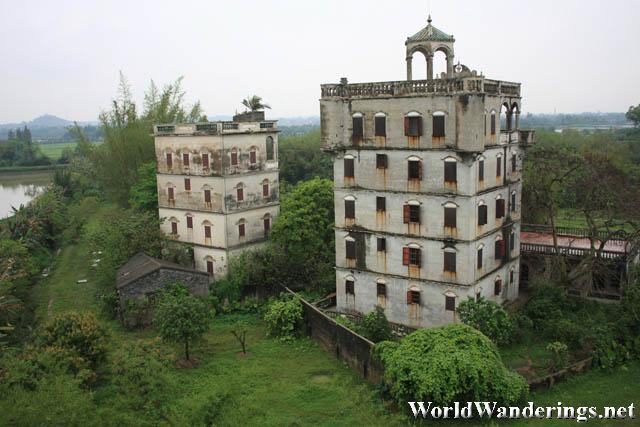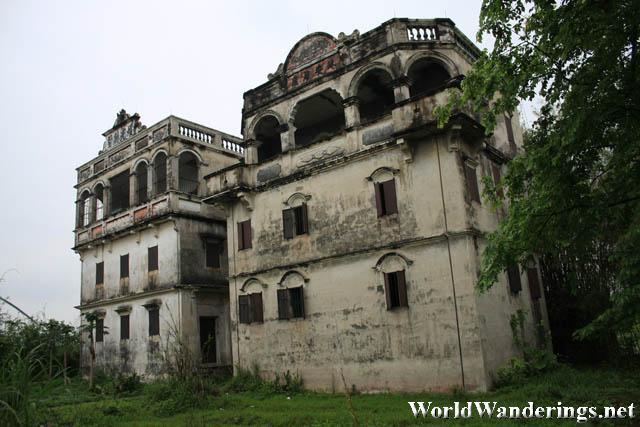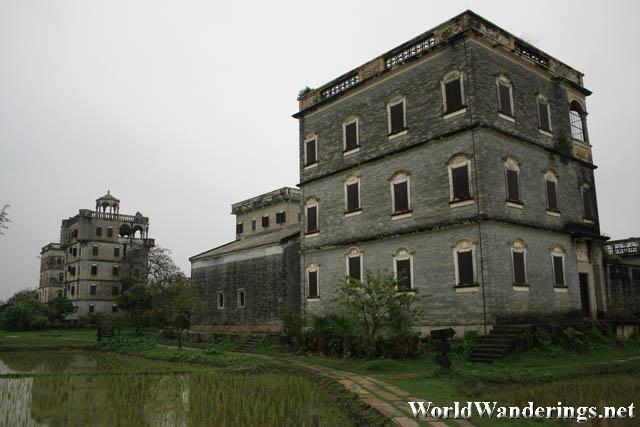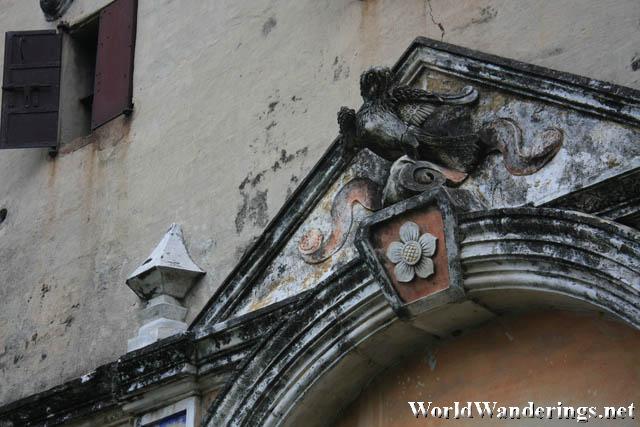When I was doing my research about Kaiping’s daiolou’s. One of the places that kept coming up was Zili Village. It seems that it is the place to go to see the daiolou. I was imagining a simple village with the diaolou all around. Well, it is mostly true, except that there is an entrance fee into Zili Village. I wasn’t expecting that a village itself would have an entrance fee for visitors. Then again, the village where the Chengyang Wind and Rain Bridge was also had an entrance. I guess it is a way for them to earn money too.
It was gloomy and drizzling when I visited Zili Village, it has been like this since I came from Chengyang, I just have to make the most of this. This place is basically a farmland with mostly rice fields. The diaolou 碉楼 can be immediately seen here since they are basically the tallest buildings in the area. These buildings are concrete buildings built in the late 1800s and the early 1900 by emigrants of the Kaiping area and are noted for their fusion of western and eastern architecture. They were mainly used for defensive purposes but have also served as places of abode and symbols of wealth of the families in the area.
Zili Village is by no means the only place where there are diaolou. The city of Kaiping itself already has quite a number of them some of them right smack in the middle of the city. Other places like Zili Village are situated in a more rural landscape thus more pleasant to explore. The buildings blend harmoniously with the green fields of the village and the relative state of abandonment has preserved the buildings well. Now that the tourism money is coming there is more incentive for them to preserve them.
It was relatively straightforward to navigate the village since there are stone paths through the village which lead to the individual diaolou. It is notable that the diaolou’s are all unique with their blend of western and eastern styles. In some of the buildings, there are eagles in front of the building instead of the traditional dragons or lions of Chinese lore. This is primarily a result of the western influence in the taste of the builders.
It is also noteworthy to know that this huge emigration of the local Chinese people in the Kaiping area has also impacted the cultures and economies of South East Asia and even America, many of whose people still trace their roots here in Kaiping. Even the name of the village is a symbol of the spirit of the people who live here. Zili 自力 is “own strength” in Chinese and basically symbolizes the people’s strength and self reliance to survive and help each other in times of trouble. The towers after all are used as refuges from the occasional bandits that roam the area.
[xmlgm {http://www.worldwanderings.net/kml/ZiliVillageDiaolou.kmz} zoom=14]



